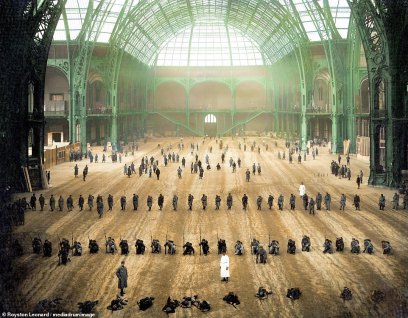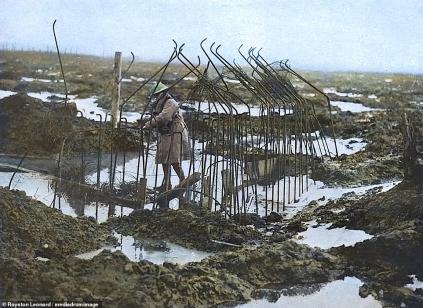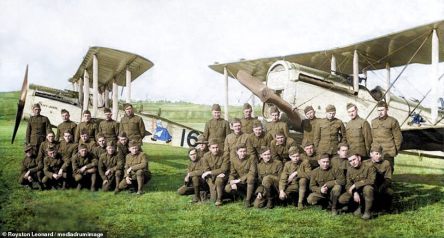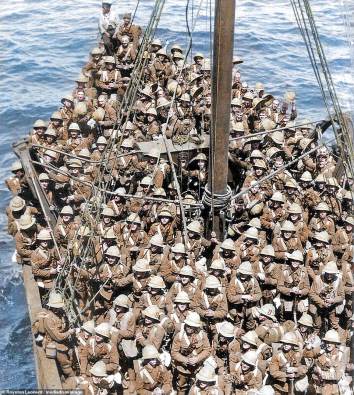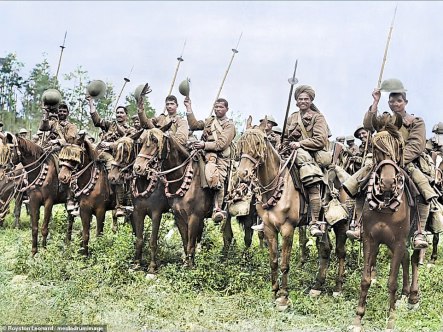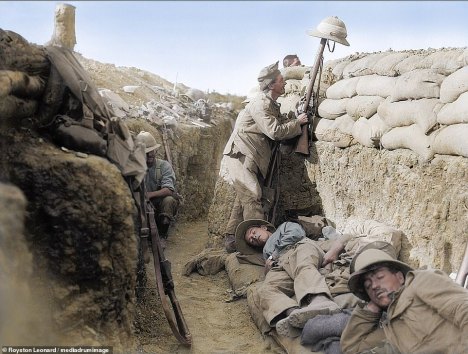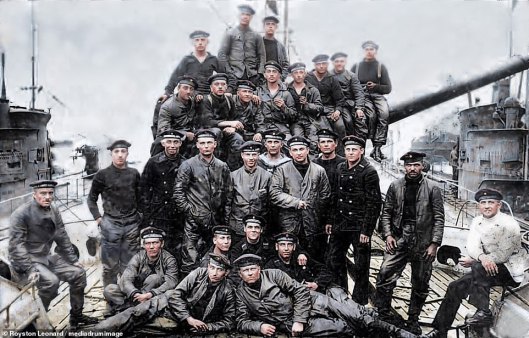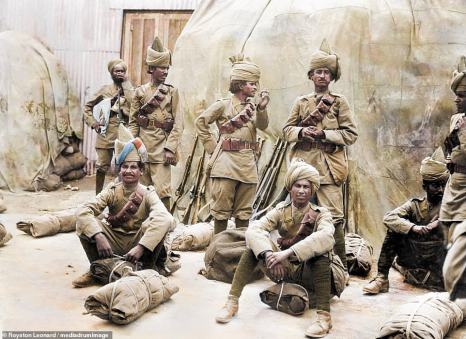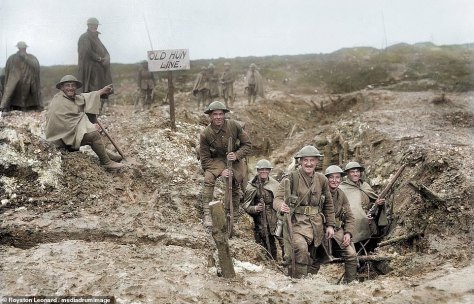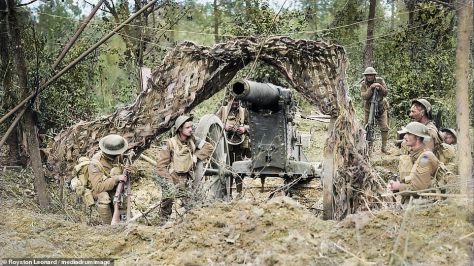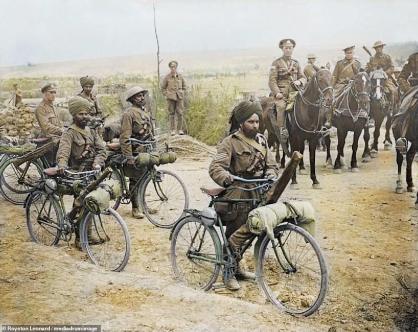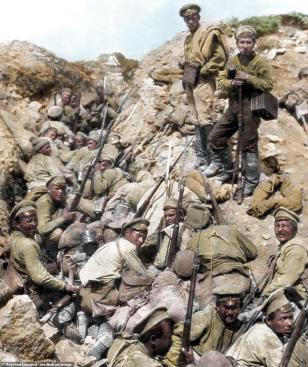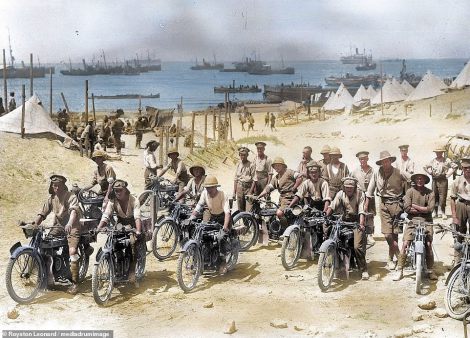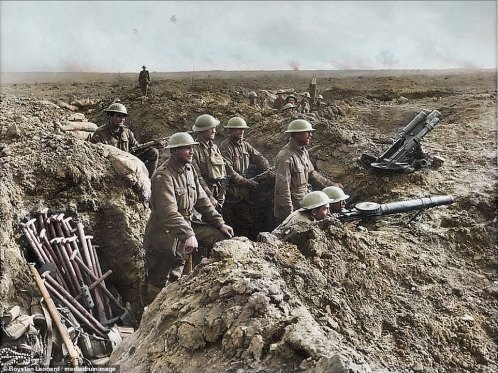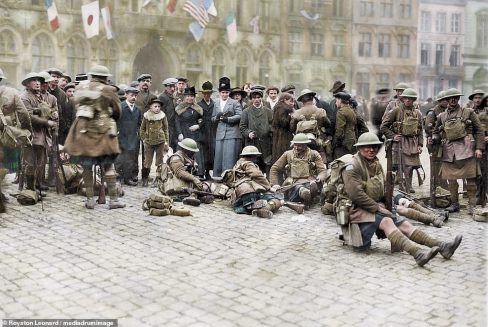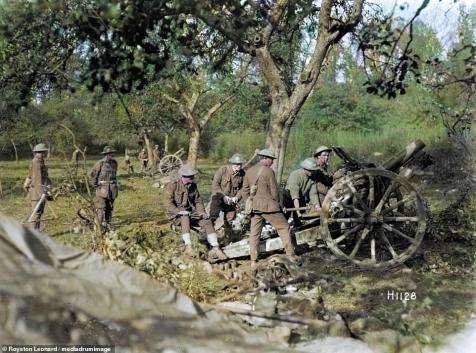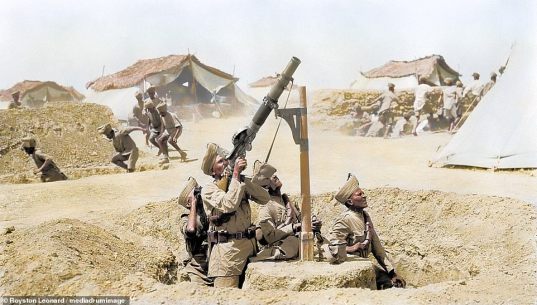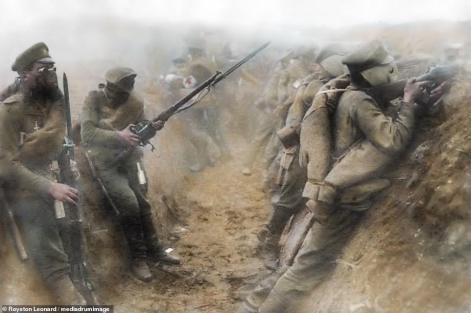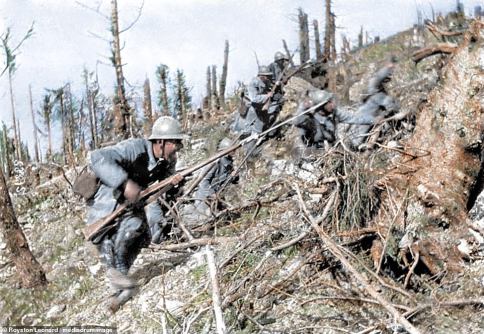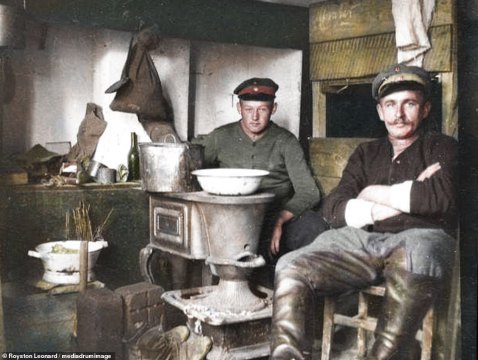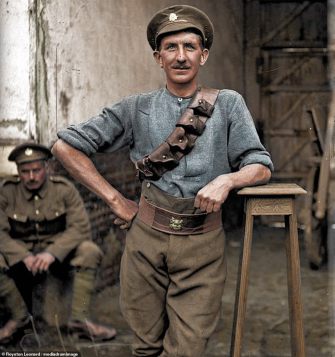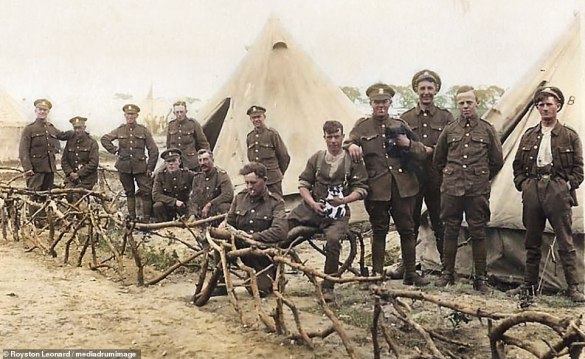
These amazing photographs are taken from the Daily Mail website on the 22nd September 2018.
They have been colourised by Royston Leonard.
He said: 'We need to remember the lost generation from all parts of the world to make sure a war like this never happens again.'
Wounded soldiers perform arms drills at the end of their medical treatment in the Great Nave in the Grand Palais in Paris, France. The Palais served as a military hospital during World War I, employing local artists who had not been deployed to the front to decorate hospital rooms or to make moulds for prosthetic limbs
Desolate: A solitary soldier wades through the swamps of Zonnebeke at the Battle of Passchendaele, France. The battle is known for being fought on a shattered landscape of mud. It took place on the Western Front, from July to November 1917.
The 50th Aero Squadron in Clermont-en-Argonne Airdrome, France in 1918. During the early part of the war, the Royal Flying Corps supported the British Army by artillery co-operation and photographic reconnaissance. This work gradually led RFC pilots into aerial battles with German pilots
Lancashire Fusiliers on a boat to Gallipoli in May 1915. The Gallipoli Campaign was one of the Allies' great disasters in World War One. It was carried out between 25th April 1915 and 9th January 1916 on the Gallipoli peninsula in the Ottoman Empire
Indian cavalry after their charge at the Somme, 14 July 1916. In World War I the Indian Army fought against the German Empire in German East Africa and on the Western Front. Over one million Indian troops served overseas, of whom 62,000 died and another 67,000 were wounded. In total at least 74,187 Indian soldiers died during the war
Irish soldiers in a trench at Mesopotamia. The Mesopotamian campaign was fought in the Middle Eastern theatre of World War I fought between the Allies represented by the British Empire, mostly troops from Britain, Australia and British India, and the Central Powers, mostly of the Ottoman Empire
German sailors pose for a photo on a U-boat before battle. In 1914 Britain had the biggest and strongest navy in the world. The Royal Navy had hundreds of ships and more than 200,000 sailors. The German Navy was the second largest in the world
Indian troops serving the British Empire on the western Front. The Indian Army during World War I contributed a large number of divisions and independent brigades to the European, Mediterranean and the Middle East theatres of war in World War I. Over one million Indian troops served overseas
British troops in a captured German trench with a sign reading Old Hun Line at Serre, March 1917. During the first two and a half years of the First World War, Serre, a village in the commune of Puisieux in the Pas-de-Calais department, was held by the Germans. The British failed to take the town during the Battle of the Somme in November 1916 but British troops were smiling in the trenches there just months later
Canadian soldiers in the Battle of Amiens during the First World War in August 1918. The British declaration of war automatically brought Canada into the war, because of Canada's legal status as a British dominion which left foreign policy decisions in the hands of the British parliament
Indian bicycle troops Somme, 1916. The Battle of the Somme took place between 1 July and 18 November 1916 on both sides of the upper reaches of the River Somme in France. More than three million men fought in the battle and one million men were wounded or killed
Russian troops waiting for the signal to go over the top in Ternopil, Ukraine on 1 July 1917. At the end of 1915 German-Austrian advance was stopped on the Ternopil line. The general outline of this front did not change until the Russian collapse in 1917
This image of a group of Australian and New Zealander soldiers with motorcycles at Gallipoli in 1915 is part of the colourised collection.
British troops survey the battle scene in France. More than 70 million military personnel, including 60 million Europeans, were mobilised in WWI. An estimated nine million combatants and seven million civilians died as a direct result of the war
Canadian 42nd Battalion - The Royal Highlanders of Canada (Black Watch) resting in Grand Place, Mons, Belgium. The expanded destructive capabilities of modern warfare posed an increased direct threat to civilian populations. With the rapid increase of military technology, the home front became a key part of the war
New Zealand soldiers prepare to fire a cannon in Le Quesnoy, France in 1918. Despite the advent of armored vehicles, bomber aircraft and portable machine guns, the old-fashioned artillery piece reigned supreme in the First World War
A Lewis gun is manned by Indian troops in Mesopotamia in 1918. The gun was designed in the US and was perfected and mass-produced in the United Kingdom. It was widely used by British and British Empire troops during the war
Russian soldiers on the Eastern Front take aim in a trench while wearing chlorine gas masks. Trench warfare occurred when a revolution in firepower was not matched by similar advances in mobility, resulting in a grueling form of warfare in which the defender held the advantage
French soldiers in a bayonet charge, up a steep slope in the Argonne Forest in 1915. From the 17th century to World War I, the rifle and bayonet was considered the primary weapon for infantry attacks
Two German soldiers in a farm house in Gouzeaucourt, France in 1915. The large village was occupied by the Germans until the British managed to invade it in early 1917
A soldier poses for a photo on the front line. The man who colorised the photos said: 'We need to remember the lost generation from all parts of the world to make sure a war like this never happens again'
Soldiers pose for the camera outside their tents. The person who colourised the photos said: 'We need to remember the lost generation from all parts of the world to make sure a war like this never happens again.'
